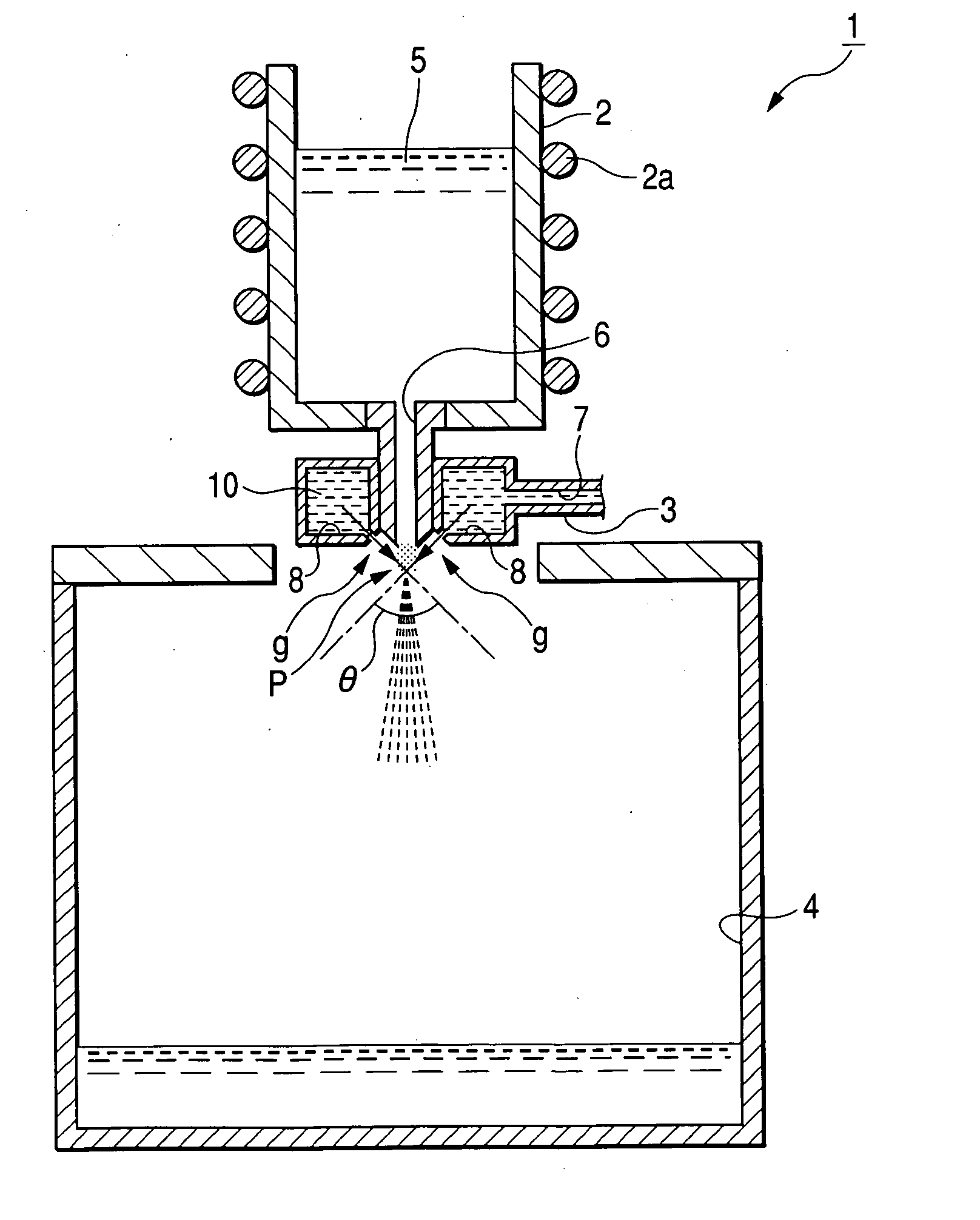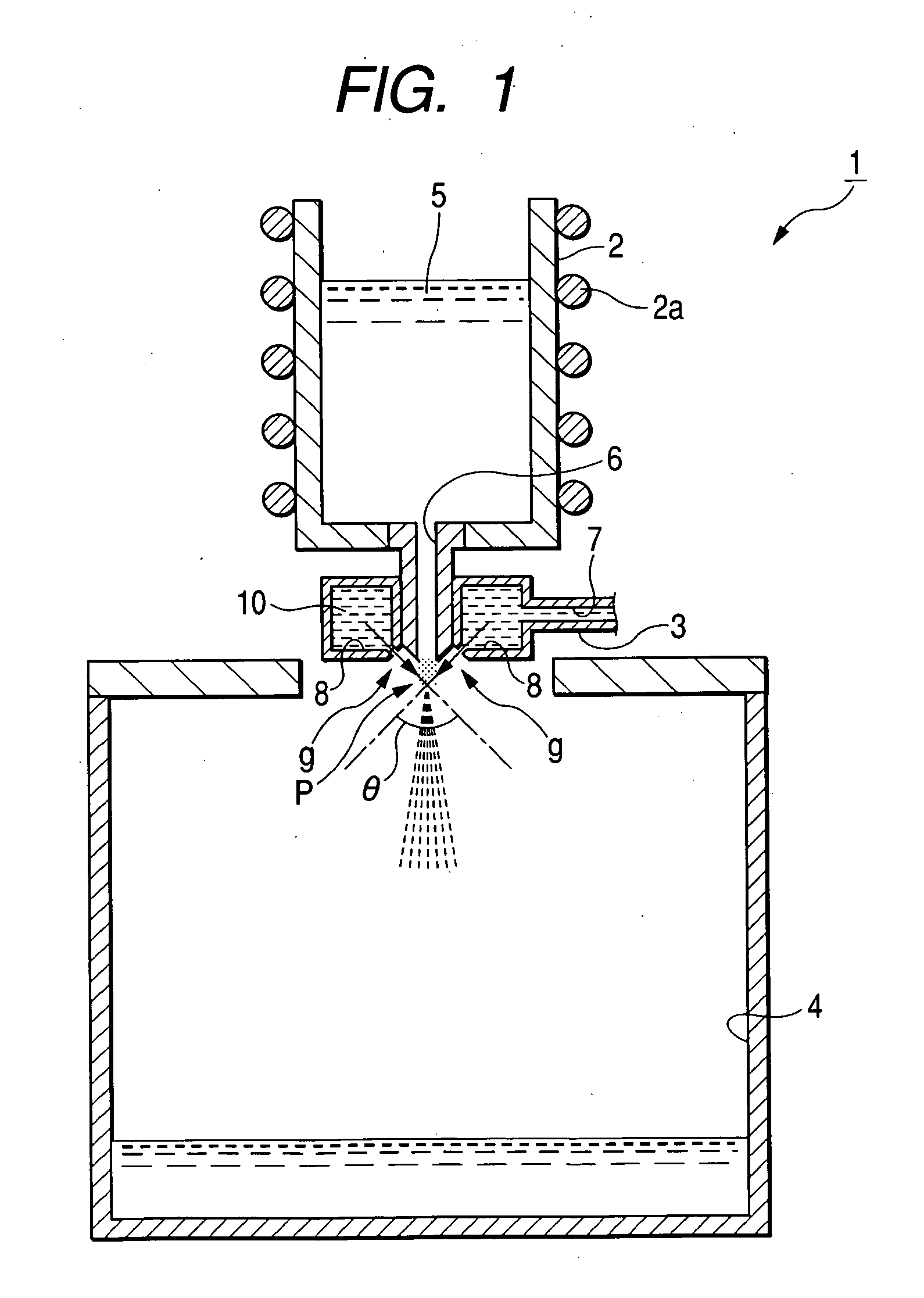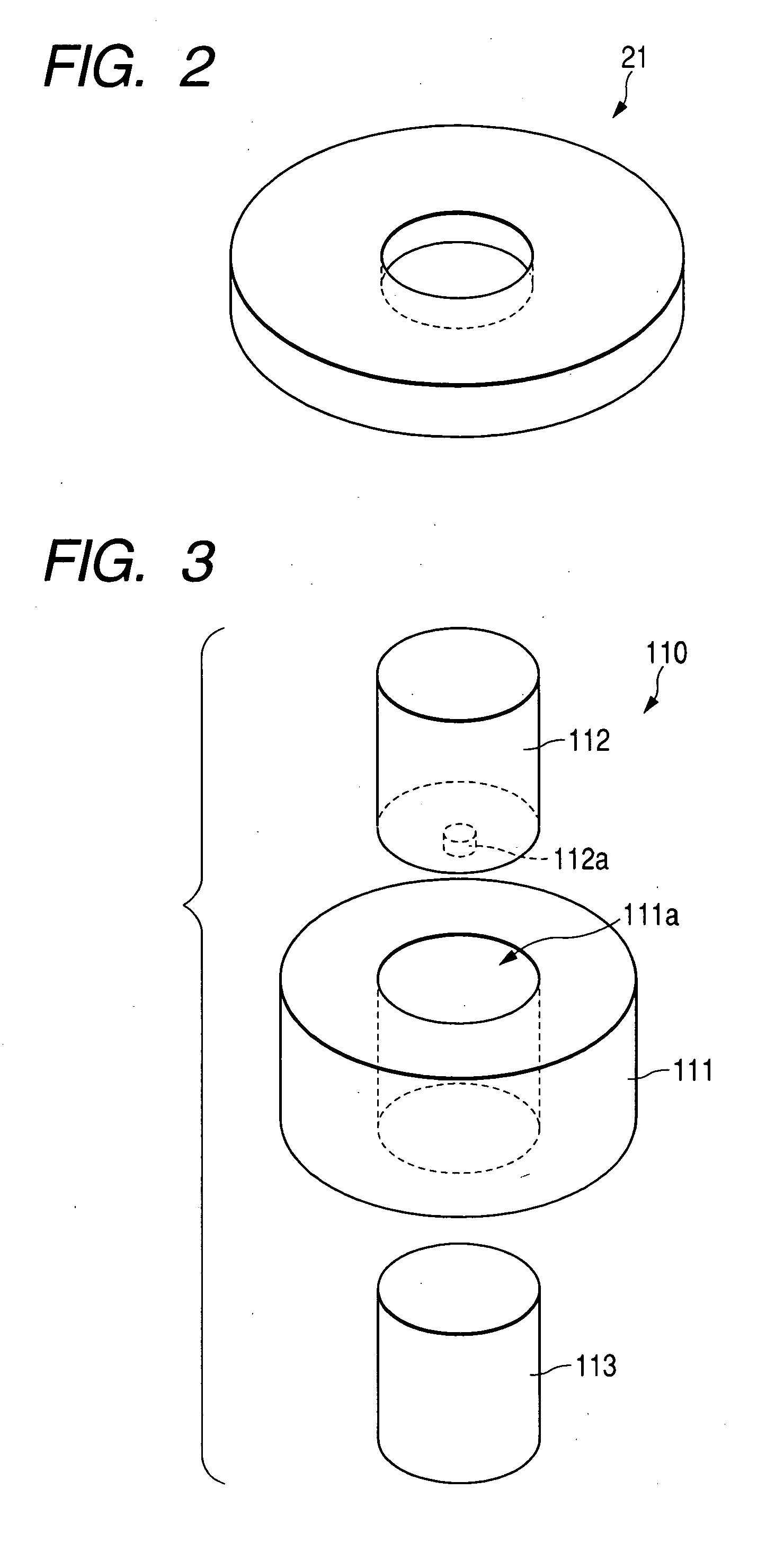Amorphous soft magnetic alloy powder, and dust core and wave absorber using the same
a soft magnetic alloy and powder technology, applied in the direction of magnetic materials, magnetic bodies, cores/yokes, etc., can solve the problems of low saturated magnetization, low core loss, and inconvenient mass production
- Summary
- Abstract
- Description
- Claims
- Application Information
AI Technical Summary
Benefits of technology
Problems solved by technology
Method used
Image
Examples
experimental example 1
FeCrPCB-Based Alloy
[0156] Fe, a Fe—C alloy, a Fe—P alloy, B and Cr, Si, P, Nb, Mo, Ni, and Co were weighted in a predetermined amount as raw materials. These raw materials were weighted under an atmosphere of air so as to have a desired composition, and were melted in a high-frequency induction heating furnace under the reduced Ar atmosphere to thus make ingots with various compositions. These ingots were supplied to the molten metal crucible of a high-pressure water spraying device shown in FIG. 1 to melt them. Then, the resultant molten alloy was dropped from the molten metal nozzles of the molten metal crucible, and at the same time high-pressure water was sprayed from the water spraying nozzle of the water sprayer shown in FIG. 1 to turn the molten alloy into mist. Then, the mist of the molten alloy was quenched. Various soft magnetic alloy powders were produced by changing manufacturing conditions at the time of producing the soft magnetic alloy powder. Further, independently ...
PUM
| Property | Measurement | Unit |
|---|---|---|
| glass transition temperature | aaaaa | aaaaa |
| coercive force | aaaaa | aaaaa |
| specific surface area | aaaaa | aaaaa |
Abstract
Description
Claims
Application Information
 Login to View More
Login to View More - R&D
- Intellectual Property
- Life Sciences
- Materials
- Tech Scout
- Unparalleled Data Quality
- Higher Quality Content
- 60% Fewer Hallucinations
Browse by: Latest US Patents, China's latest patents, Technical Efficacy Thesaurus, Application Domain, Technology Topic, Popular Technical Reports.
© 2025 PatSnap. All rights reserved.Legal|Privacy policy|Modern Slavery Act Transparency Statement|Sitemap|About US| Contact US: help@patsnap.com



